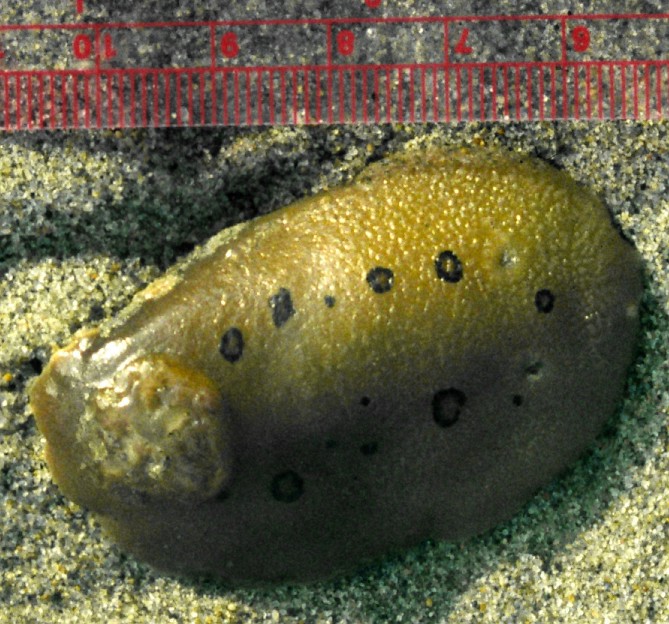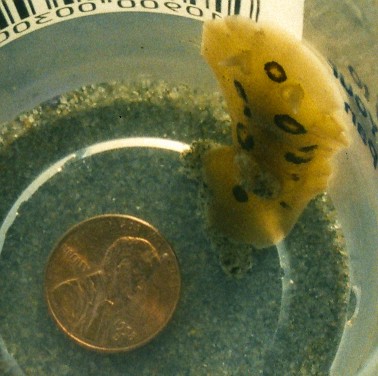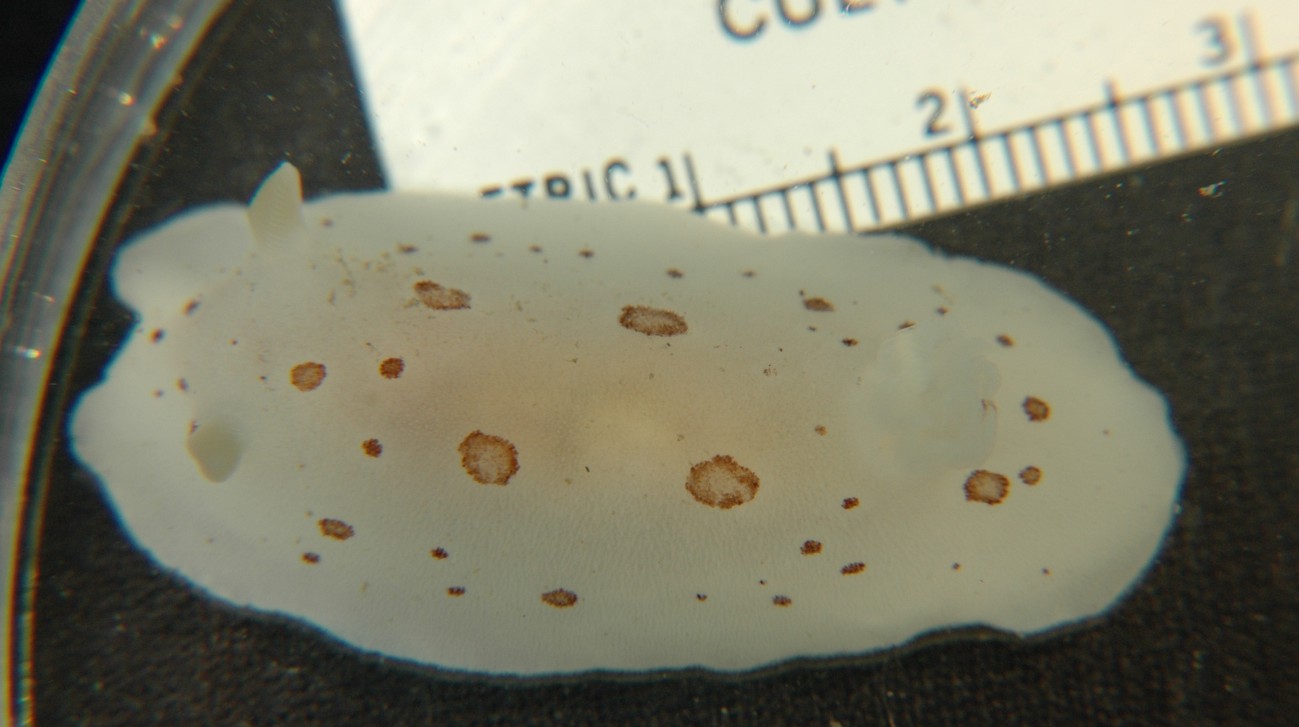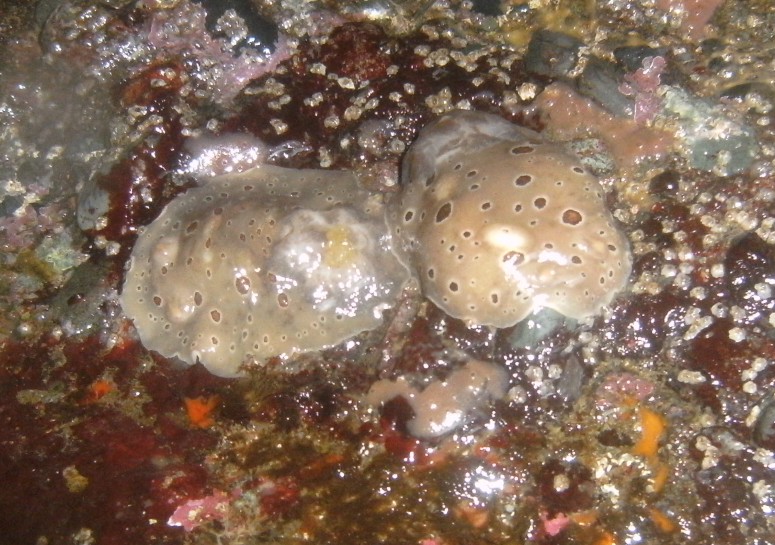Dialula sandiegensis (Cooper, 1862)Common name(s): Ring-spotted dorid, San Diego dorid |
|
| Synonyms:
Discodoris sandiegensis Dialvia sandiegensis |
 |
| Phylum Mollusca
Class Gastropoda Subclass Opisthobranchia Order Nudibranchia Suborder Doridacea Family Discodorididae |
|
| Dialula sandiegensis, Balboa Island, Ca | |
| (Photo by: Dave Cowles, May 1999) | |
How to Distinguish from Similar Species: The large dark rings make this dorid easy to distinguish. However, it is very similar to another species, Discodoris heathi, which has spots instead of rings. In my observations, spots seem to grade into rings.
Geographical Range: Alaska south to Puerto Penasco, Mexico
Depth Range: Low intertidal and subtidal to 35 m. Mostly intertidal in the north, subtidal in the south
Habitat: Rocky intertidal, surge channels
Biology/Natural History: Feeds on Halichondria, Haliclona, Myxilla, and Petrosia sponges. The egg ribbon is narrow, white, attached in an oval spiral under rock ledges by one margin.
According to Baltzley et al., (2011), many gastropods, including this species, have a special network of pedal ganglia in their foot which assists in crawling. The two main neurons involved produce pedal peptides which elicit an increase in the rate of beating of cilia on the foot, resulting in crawling.
| Return to: | |||
| Main Page | Alphabetic Index | Systematic Index | Glossary |
References:
Dichotomous Keys:Kozloff 1987, 1996
Smith and Carlton, 1975
General References:
Kozloff,
1993
Niesen,
1994
Morris
et al., 1980
Scientific Articles:
Baltzley,
Michael J., Allison Serman, Shaun D. Cain, and Kenneth J. Lohmann, 2011.
Conservation of a Tritonia
pedal peptides network in gastropods. Invertebrate Biology
130: 4 pp. 313-324
General Notes and Observations: Locations, abundances, unusual behaviors:

This species is sometimes cream or even yellow. Photo by Dave
Cowles, Balboa Island, May 1999

This individual, from 10 m depth near Northwest Island, WA, is the
color pattern I more typically see. Photo by Dave Cowles,
July 2005

A pair at Cape Flattery. Photo by Dave Cowles
Authors and Editors of Page:
Dave Cowles (2005): Created original page